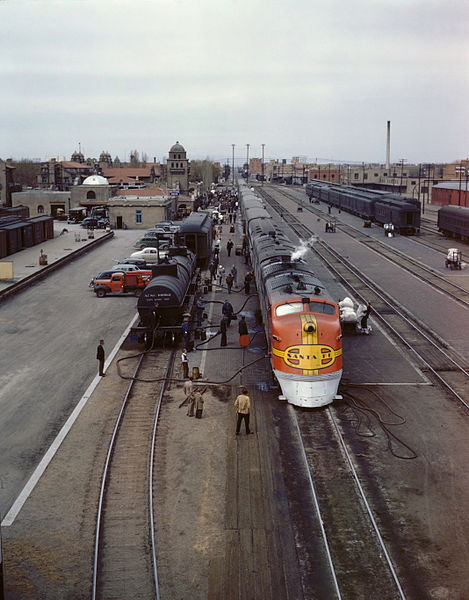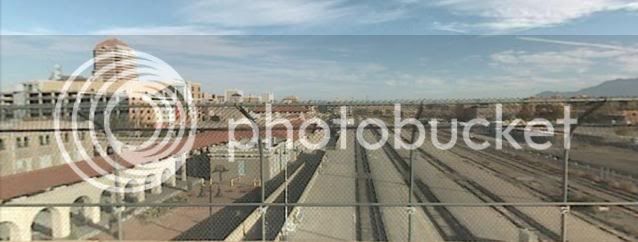Albuquerque has no doubt gone through their fair bit of changes over the years. This is an interesting comparison of the ATSF Super Chief in 1943 at the Depot from Wikipedia and a similar view almost 70 years later from Google Street View. Sorry - I can't crop and size them perfectly to match. Maybe later. But for now, here is essentially the same view point.
1943 (duh, as if you couldn't tell!):

Google Street View (I recommend opening in a new window or tab you can swap between the two):
Click Me
The only thing that I can clearly identify in BOTH images is the little building with the single blue window pane (today, it's completely boarded up). That was, up until about 5 years ago, THE Albuquerque train station & waiting room/baggage room for many years after a fire destroyed the original train station seen behind the Western Union sign.
Pretty interesting!
1943 (duh, as if you couldn't tell!):

Google Street View (I recommend opening in a new window or tab you can swap between the two):
Click Me
The only thing that I can clearly identify in BOTH images is the little building with the single blue window pane (today, it's completely boarded up). That was, up until about 5 years ago, THE Albuquerque train station & waiting room/baggage room for many years after a fire destroyed the original train station seen behind the Western Union sign.
Pretty interesting!























































